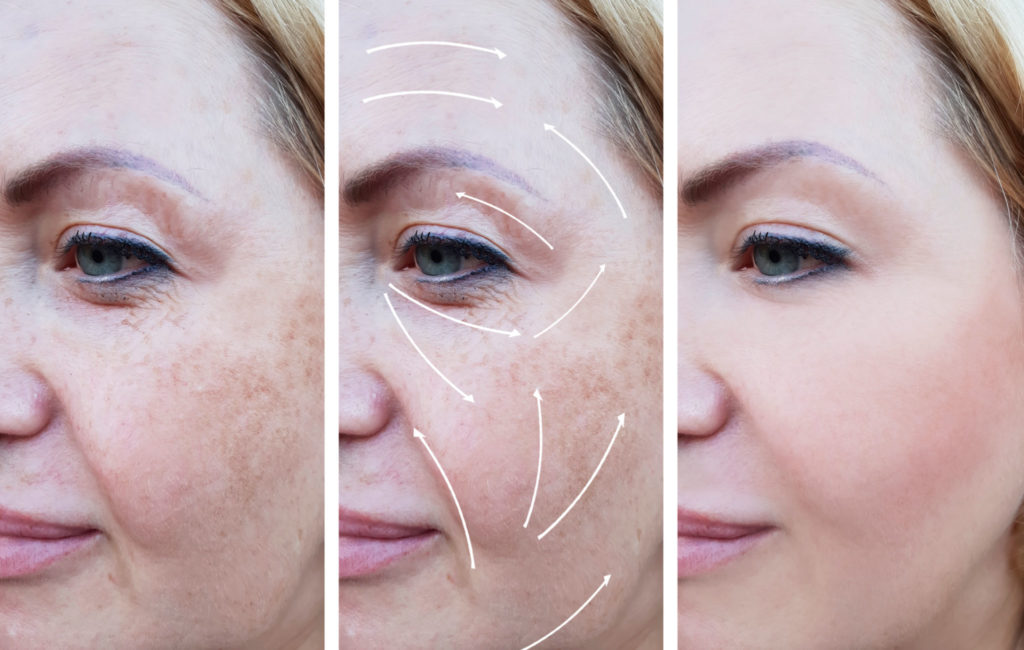The fact that you are reading this article tells us that you are bothered by the dark patches or discoloration happening on your skin. These skin changes may be disturbing especially if they are found on your face. For some, these dark patches or discoloration on the skin may even kill their self-confidence. But don’t worry because you have come to the right place. Seoul Guide Medical will help you understand why are you getting these new spots on your skin.

Skin Pigmentation
Skin pigmentation, also known as the color of your skin, varies depending on the amount of melanin your body is producing(1). Melanin is a pigment, produced by skin cells called melanocytes, that gives color to your skin and helps protect your skin from harmful UV rays. Dark-skinned people normally have a higher melanin content than light-skinned people(4). Several factors such as genetics, exposure to the sun, hormonal changes, and biochemical substances may stress the skin, leading to abnormal distribution and production of melanin. The increased production of melanin, which appears as dark patches on the skin is called hyperpigmentation while decreased production of melanin which appears to be lighter than your overall skin tone is called hypopigmentation(2).
Pigmentation caused by sunlight
If you are one of those people who spend most of their days under the sun without protective sunscreen, you might acquire new spots on your skin. UV radiation from the sun is the number one factor affecting skin pigmentation(3). What happens to the skin when exposed to long hours under the sun? Since melanin pigments act as a natural sunscreen by protecting the skin against UV radiation, your skin produces more melanin. The excess melanin makes your skin darker. The pigmentation caused by sunlight, mostly known as tanning, becomes noticeable 48 to 72 hours after exposure to sunlight(5). Dark-skinned people can most likely endure longer sun exposure than light-skinned people due to their higher melanin content(5). However, too much sun exposure, either in dark-skinned or light-skinned people, can stress the skin, causing hyperpigmentation. When the skin is stressed from the UV radiation of the sun, an excessive increase in melanin production happens which makes your skin look patchy, dark, or discolored.
Solar Lentigos

Hyperpigmentation spots resulting from the sun, or UV exposure are called solar lentigos – also known as sun spots, age spots, or liver spots. These are harmless flat patches of darkened skin that result from being exposed constantly to UV(6). They appear on sun-exposed areas such as the face, hands, and arms. Solar lentigos differ in color and usually range from yellow-brown to dark brown-black.
Pigmentation caused by aging
Pigmented spots on the skin due to aging are called age spots. They appear as flat spots that vary in color depending on skin tone, usually ranging from tan to dark brown. Age spots are not visible in children because they have an even distribution of melanin in their skin(7). Some may already experience age spots around their 20s, especially people with light skin or people who spend a lot of time in the sun. Normally, age spots become visible after middle age because as you age, your skin produces less collagen and elastin – proteins necessary for making your skin look firm, elastic and healthy. This makes your skin more prone to developing dark patches and discolorations.
Melasma

Melasma is a common hyperpigmentary disorder that causes patches of discoloration on your skin(6). It is characterized by brown or blue-gray spots, that usually appear on sun-exposed areas of the skin such as the cheeks, forehead, upper lip, nose, chin, and sometimes neck as well(8) and are commonly found in young adults to middle age females(5). Melasma can be caused by either pregnancy, use of oral contraceptives, or repetitive sun exposure(5,6). People with a family history of melasma have a higher chance of developing this skin condition. Most people with melasma are hypersensitive to UV radiation, and minimal exposure to sunlight can already stimulate hyperpigmentation on their skin(6).
Pigmentation caused by hormonal changes
Some hyperpigmentary disorders are caused by fluctuations in hormonal levels. Hormones are said to influence the production and distribution of melanin – the pigment responsible for giving color to your skin – in the epidermis(9). This is normally occurring in pregnant women and women taking oral contraceptives. Hormonal fluctuations may be caused by thyroid dysfunction or the side effects of taking hormone therapy medications.
Recommendations
It is best recommended to apply sunscreen (SPF 30 or higher) daily to protect your skin from the sun. When you are outdoors and forgot to apply sunscreen, you can wear a hat or find a shade. Moreover, don’t spend too much time under the sun. Pigmentation spots can fade and can be prevented from returning if consistent sun protection is applied. However, sometimes these spots are stubborn and won’t go away. Then, this is the best time to contact us here at Seoul Guide Medical so we can find a suitable dermatologist for you.

Conclusion
In conclusion, the number one factor affecting most skin pigmentation conditions is prolonged sun exposure. However, there are several more factors involving skin changes, such as hormonal changes, age, and genetics. It is highly recommended to apply sunscreen daily. Sunscreen is going to be your best bud in treating these pigmentation spots. However, darkened spots that won’t go away should be consulted with a dermatologist. Are you interested in learning more? Contact us here at Seoul Guide Medical so we could further assist you.

